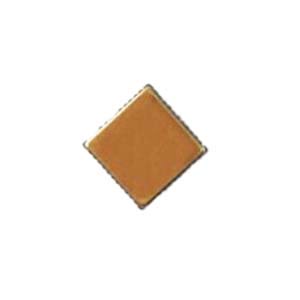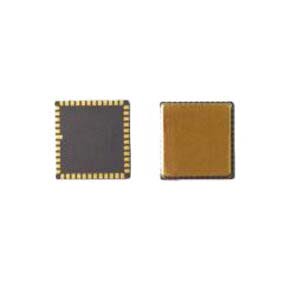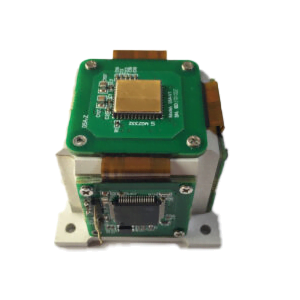1.Application products
North seeking MEMS Gyro ER-MG2-100
Navigation grade MEMS Gyro ER-MG2-300/400
2.Register format introduction:
MEMS gyro register address (absolute address) access consists of page and address offset. Page is a single byte, and the available values range from 0 to 1. The address offset is 6 bits and the range is 0x00~0x3E. 0x3F sets the register address as the "page". This address maps to page 0 only and is not affected by the Page setting.
The register page needs to be modified when the absolute register address exceeds 0x3F. The setting to write the corresponding page value to the register page is at address 0x3F.
| Page 0 | 00 | 01 | 02 | 03 | 04 | 05 | 06 | 07 | 08 | 09 | 0A | 0B | 0C | 0D | 0E | 0F | offset address |
| 00 | 01 | 02 | 03 | 04 | 05 | 06 | 07 | 08 | 09 | 0A | 0B | 0C | 0D | 0E | 0F | Register address | |
| 10 | 11 | 12 | 13 | 14 | 15 | 16 | 17 | 18 | 19 | 1A | 1B | 1C | 1D | 1E | 1F | offset address | |
| 10 | 11 | 12 | 13 | 14 | 15 | 16 | 17 | 18 | 19 | 1A | 1B | 1C | 1D | 1E | 1F | Register address | |
| 20 | 21 | 22 | 23 | 24 | 25 | 26 | 27 | 28 | 29 | 2A | 2B | 2C | 2D | 2E | 2F | offset address | |
| 20 | 21 | 22 | 23 | 24 | 25 | 26 | 27 | 28 | 29 | 2A | 2B | 2C | 2D | 2E | 2F | Register address | |
| 30 | 31 | 32 | 33 | 34 | 35 | 36 | 37 | 38 | 39 | 3A | 3B | 3C | 3D | 3E | 3F | offset address | |
| 30 | 31 | 32 | 33 | 34 | 35 | 36 | 37 | 38 | 39 | 3A | 3B | 3C | 3D | 3E | 3F | Register address | |
| Page 1 | 00 | 01 | 02 | 03 | 04 | 05 | 06 | 07 | 08 | 09 | 0A | 0B | 0C | 0D | 0E | 0F | offset address |
| 40 | 41 | 42 | 43 | 44 | 45 | 46 | 47 | 48 | 49 | 4A | 4B | 4C | 4D | 4E | 4F | Register address | |
| 10 | 11 | 12 | 13 | 14 | 15 | 16 | 17 | 18 | 19 | 1A | 1B | 1C | 1D | 1E | 1F | offset address | |
| 50 | 51 | 52 | 53 | 54 | 55 | 56 | 57 | 58 | 59 | 5A | 5B | 5C | 5D | 5E | 5F | Register address | |
| 20 | 21 | 22 | 23 | 24 | 25 | 26 | 27 | 28 | 29 | 2A | 2B | 2C | 2D | 2E | 2F | offset address | |
| 60 | 61 | 62 | 63 | 64 | 65 | 66 | 67 | 68 | 69 | 6A | 6B | 6C | 6D | 6E | 6F | Register address | |
| 30 | 31 | 32 | 33 | 34 | 35 | 36 | 37 | 38 | 39 | 3A | 3B | 3C | 3D | 3E | 3F | offset address | |
| 70 | 71 | 72 | 73 | 74 | 75 | 76 | 77 | 78 | 79 | 7A | 7B | 7C | 7D | 7E | 3F | Register address | |
Table 3 Register format
The default register page is Page 0, which accesses the contents of the register's absolute address range 0x00~0x3F.When a register with an absolute azimuth address greater than 0x3F is needed, the page register (0x3F) needs to be modified and then accessed according to the offset address.
For example, if you want to access the absolute register address 0x40, you need to write the address 0x3F to 0x01 through SPI, and then SPI operates on the address 0x00.
Note: Because some bits in registers are defined as reserved, they usually have default values on them and may affect the actual function and performance of the chip.When modifying part of the register, it is necessary to carry out read-change-write operation, that is, read the register first and write back the corresponding bit modified.
3.Register content description
Register absolute address: 0x2E, STATUS
| Bit 7 | Bit 6 | Bit 5 | Bit 4 | Bit 3 | Bit 2 | Bit 1 | Bit 0 |
| reserve | Data_Rdy | reserve | reserve | reserve | reserve | reserve | reserve |
| Sensor data status flag. Data_Rdy1. Effective sensor data; 0, the sensor data is invalid; |
|||||||
Register absolute address: 0x30, TEMP_OUT_L
| Bit 7 | Bit 6 | Bit 5 | Bit 4 | Bit 3 | Bit 2 | Bit 1 | Bit 0 |
| Temp_OUT [7:0] | |||||||
| Sensor temperature output, low 8 bit. | |||||||
Register absolute address: 0x31, TEMP_OUT_H
| Bit 7 | Bit 6 | Bit 5 | Bit 4 | Bit 3 | Bit 2 | Bit 1 | Bit 0 |
| Temp_OUT [15:8] | |||||||
| Sensor temperature output, high 8 bits | |||||||
Register absolute address: 0x32, Rate_OUT_L
| Bit 7 | Bit 6 | Bit 5 | Bit 4 | Bit 3 | Bit 2 | Bit 1 | Bit 0 |
| Rate_OUT [7:0] | |||||||
| Sensor angular velocity output, Bit 7:0 | |||||||
Register absolute address: 0x33, Rate_OUT_M
| Bit 7 | Bit 6 | Bit 5 | Bit 4 | Bit 3 | Bit 2 | Bit 1 | Bit 0 |
| Rate_OUT [15:8] | |||||||
| Sensor angular velocity output, Bit 15:8 | |||||||
Register absolute address: 0x34, Rate_OUT_H
| Bit 7 | Bit 6 | Bit 5 | Bit 4 | Bit 3 | Bit 2 | Bit 1 | Bit 0 |
| Rate_OUT [23:16] | |||||||
| Sensor angular velocity output, Bit 23:16 | |||||||
Register absolute address: 0x3F, Addr_Page_Sel
| Bit 7 | Bit 6 | Bit 5 | Bit 4 | Bit 3 | Bit 2 | Bit 1 | Bit 0 |
| Addr_Page_Sel [7:0] | |||||||
| Register address access page Settings: 0: Absolute address range of the accessible register: 0x000 ~ 0x03E 1: Absolute address range of the accessible register: 0x040 ~ 0x07E |
|||||||
Register absolute address: 0x49, Chip ID 1
| Bit 7 | Bit 6 | Bit 5 | Bit 4 | Bit 3 | Bit 2 | Bit 1 | Bit 0 |
| CHIP_ID_1: 0x41 | |||||||
| Chip ID 1. Default: 0x41 | |||||||
Register absolute address: 0x4A, Chip ID 2
| Bit 7 | Bit 6 | Bit 5 | Bit 4 | Bit 3 | Bit 2 | Bit 1 | Bit 0 |
| CHIP_ID_2: 0x01 | |||||||
| Chip ID 2. Default: 0x01 | |||||||
Register absolute address: 0x4C, OTP_ID_0
| Bit 7 | Bit 6 | Bit 5 | Bit 4 | Bit 3 | Bit 2 | Bit 1 | Bit 0 |
| OTP_ID_0 | |||||||
| OTP identifies ID 0 | |||||||
Register absolute address: 0x4D, OTP_ID_1
| Bit 7 | Bit 6 | Bit 5 | Bit 4 | Bit 3 | Bit 2 | Bit 1 | Bit 0 |
| OTP_ID_1 | |||||||
| OTP identifies ID 1 | |||||||
Register absolute address: 0x4E, OTP_ID_2
| Bit 7 | Bit 6 | Bit 5 | Bit 4 | Bit 3 | Bit 2 | Bit 1 | Bit 0 |
| OTP_ID_2 | |||||||
| OTP identifiesID 2 | |||||||
Register absolute address: 0x4F, OTP_ID_3
| Bit 7 | Bit 6 | Bit 5 | Bit 4 | Bit 3 | Bit 2 | Bit 1 | Bit 0 |
| OTP_ID_3 | |||||||
| OTP identifiesID 3 | |||||||
Register absolute address: 0x50, OTP_ID_4
| Bit 7 | Bit 6 | Bit 5 | Bit 4 | Bit 3 | Bit 2 | Bit 1 | Bit 0 |
| OTP_ID_4 | |||||||
| OTP identifies ID 4 | |||||||
Register absolute address: 0x51, OTP_ID_5
| Bit 7 | Bit 6 | Bit 5 | Bit 4 | Bit 3 | Bit 2 | Bit 1 | Bit 0 |
| OTP_ID_5 | |||||||
| OTP identifies ID 5
The value of the OTP identification ID is determined by factory Settings. |
|||||||
Register absolute address: 0x59, SYNC_BW_SEL
| Bit 7 | Bit 6 | Bit 5 | Bit 4 | Bit 3 | Bit 2 | Bit 1 | Bit 0 |
| reserve | reserve | reserve | reserve | reserve | reserve | Sync_ODR_Sel | BW _Sel |
| External synchronization and output bandwidth Settings selection. Sync_ODR_Sel, external synchronization input parameter selection, 0: synchronization input and update rate parameter use synchronization setting register value; 1: OTP is used for synchronous input and update rate parameters; BW_Sel, output bandwidth parameter selection, 0: Output bandwidth parameter USES bandwidth to set the register value; 1: The output bandwidth parameter USES OTP burning content; |
|||||||
Register absolute address: 0x6A, SYNC_CTRL
| Bit 7 | Bit 6 | Bit 5 | Bit 4 | Bit 3 | Bit 2 | Bit 1 | Bit 0 |
| reserve | ODR_RATE[2:0] | DRY_Polar | Sync_Polar | Sync_Mode [1:0] | |||
| data updating rate:
ODR_RATE: 0:2000 Hz 1:1000 Hz 2:500 Hz |
3:250 Hz
4:125 Hz 5:62.5 Hz 6:6000 Hz 7:12000 Hz |
||||||
| Synchronous input control. DRY_Polar: Data Ready outputs interrupt polarity.0: When the data is valid, the interrupt pin output is low; 1: When the data is valid, the interrupt pin output is high; Sync_Polar: External synchronization of input signal polarity.0: The falling edge is effective; 1: The rising edge is valid; Sync_Mode: Synchronous signal source selection.0: Adopt internal synchronization signal; 1. Adopt external synchronization signal; |
|||||||
Register absolute address: 0x6B, SYNC_DIV_L
| Bit 7 | Bit 6 | Bit 5 | Bit 4 | Bit 3 | Bit 2 | Bit 1 | Bit 0 |
| SYNC_DIV [7:0] | |||||||
| Low frequency quotient of synchronous signal input. | |||||||
Register absolute address: 0x6C, SYNC_DIV_H
| Bit 7 | Bit 6 | Bit 5 | Bit 4 | Bit 3 | Bit 2 | Bit 1 | Bit 0 |
| SYNC_DIV [15:8] | |||||||
| Synchronous signal input frequency division factor is high byte. Frequency division coefficient of external synchronization signal, input range: 0~65535; After external synchronization signal is adopted, ODR frequency:That is, when the frequency division coefficient is 0, the ODR is half of the frequency of the external synchronous clock. |
|||||||
Register absolute address: 0x6D, BW_CTRL
| Bit 7 | Bit 6 | Bit 5 | Bit 4 | Bit 3 | Bit 2 | Bit 1 | Bit 0 |
| reserve | reserve | LPF SEL[1:0] | BW_CRTL[3:0] | ||||
| Low pass filter series selection:
LPF_ODR: 0: LPF 1 is enabled 1: LPF 1 and LPF 2 are enabled 2: Enable LPF 1, LPF 2, and LPF 3 3: Disables all low-pass filters |
|||||||
| Output bandwidth control
BW_CTRL: 0:12.5 Hz 1:25Hz 2:50Hz 3:100Hz 4:150Hz 5:200Hz 6:250Hz 7:300Hz |
8:350Hz 9:400Hz 10:450Hz 11:500Hz 12:550Hz 13:600Hz 14:700Hz 15:800Hz |
||||||
More Technical Questions
1.How accurate is MEMS gyroscope?
2.Where are MEMS Gyroscopes Used?
4.What is the Hardware Interface of Ericco MEMS Gyro
5.What Data Format is High Performance MEMS Gyro
6.How to Weld and Install High Performance MEMS Gyro
Products in Article


.jpg)




